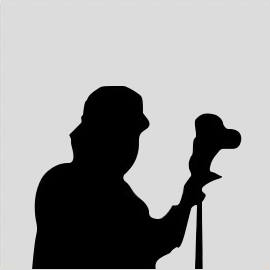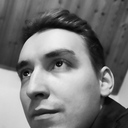0 Likes
«واريس» عنوان نمايشگاه مجسمههاي جديد مريم كوهستاني است. اما بيش از اين اسم گيرا، فقدان پاهاست که در اين مجسمهها جلب توجه میکند. پاهایی که در استحالهای غريب، شكل خود را از دست داده و به میز، قفس، پایه، چمدان و... بدل شدهاند تا شيئوارگي هولناك انسان را به نمايش بگذارند. از سوي ديگر ميشود با زنان خانهداري همذاتپنداری كرد كه به شكل غريبي در اشیاء آشناي خانه مستحيل شدهاند. غریبی این استحالهی زنانه به روزمرگی آن مربوط میشود. انگار گرد ملالي که بر اثر گذر سالها بر سر اشیاء مینشیند را میتوان بر تن و لباس این زنان نيز احساس کرد. در واقع کاربرد عناصری آشنا مثل میز، چمدان و... به عنوان بخشی از تن یک زن – به شکلی آشنا و آشنا زدایانه - احساس متناقضی از حیرت و عادت را به وجود میآورد که نتیجهاش میتواند درکی ناگهانی از هولناکی روزمرگی و ملالی فاجعهبار باشد که بر اثر گذر ايام به وجود آمده است. این تقابل ملال و فاجعه را میتوان در تقابل چهرههای کودکانه و در عین حال فرتوت مجسمهها نيز احساس کرد. انگار این دختر/زنها در برزخِ میان کودکی و پیری سرگردانند. حتی به نظر میرسد مجسمهها در كشش ميان دو قطبِ طغیان و تسلیم واقع شدهاند و با استحالهي دستها يا پاهايشان نمود تازهتری پیدا کردهاند. ميتوان به روشني ديد كه دستهاي مجسمهها چطور با درماندگي به هر چیزی که در دسترس بوده چنگ زدهاند: پرندهای سرخ و بیشکل، گوشها، آغوش خویش و... . این وضعیت، حالتی خویشتندارانه به این زنان بخشیده که به ما ميگويد اينها در عين رنج، خشم خود را فروخوردهاند. همچنين بافت ویژهی كه در سطوح مجسمهها به كار رفته بلافاصله مخاطب را به ياد انسانهايي نمکاندود شده مياندازد. گویی این زنها نيز از جنس همان مردان نمکی كشف شده در معدن نمك روستاي چهرآباد زنجان هستند كه قرنهاست در وضعيت اندوهبار خود منجمد شدهاند.
در نمایشگاههای انفرادی مریم کوهستانی همیشه یکی از آثار به شکل محسوسی از ساير کارهايش، متمایز بوده است. مثلا در نمایشگاه قبلي او، دختركی بود که بیتوجه به طوفانی که بخشی از تنش را برده، مشغول خوردن بستنی بود كه به اين ترتيب هولاناکی دیگر آثار را با حالتی خیاموار تعدیل ميكرد. و در اين مجموعه نيز كه نام واريس بر آن نهاده، دختری شوخ و سرکش را ميبينيم كه دست در کفشهایش کرده و پاهای نحیفش را با بیقیدی به نمایش ميگذارد، گويي خالق اثر قصد دارد با اين مجسمهي متمايز كيفيتي درمانگرایانه به آثارش بدهد.
در آخر بايد گفت كه مجسمههای مریم کوهستانی با وضعیت راکد و ایستایی که دارند به روشني گذر زمان و انتظار خاموش وقوع فاجعه را افشا میکنند. آنها با چشمهای بسته و نگاههایی که از مخاطب میدزدند از دیدن و دیده شدن اجتناب میکنند و تنها کاری که از دستشان برمیآید اين است كه در گوشهي كوچكي از جهان به انتظار هولناكشان ادامه بدهند. به قول چارلز بوکفسکی: دیگر حرفی برای گفتن نیست / فقط انتظار / که هرکس، به تنهایی با آن روبرو میشود / آه زمانی جوان بودم / آن قدر جوان که باور نمیکنید!
شاهرخ گیوا
زمستان 92
اولین بار که روی ساق پایت آن رگهای نازک آبی و بنفش را می بینی ته دلت احساس غریب و خوشایندی داری، شبیه کشف اولین تار موی سفید. حسی که اعلام میکند؛ دیگر بزرگ شده ای، حتی زیبا به نظر می رسند. اما کم کم آن رگهای زیبای آبی و بنفش مثل گیاه عشقه از ساقه های نازک پاهایت بالا می روند و حالا این تویی که از خشکیدن وحشت می کنی. از خشکیدن یک جفت پایی که خاصیتشان را از دست داده اند و تو دیگر باید با احتیاط راه بروی و میل به دویدن را در خودت سرکوب کنی.
زنهای این مجموعه در هر موقعیت و جایگاه اجتماعی که هستند، در حالی که تلاش می کنند روی پای خودشان بایستند، هریک به نوعی گرفتارِ " در جای ماندن" در یک وضعیت مشترکند.
هرچند به ظاهر گاه طغیانگر به نظر می رسند؛ همچون زنی که با چمدانی بسته، آماده ی عظیمت است اما پاهاش در چمدانش قفل شده و میداند که هرگز سفری در پیش نیست چرا که پای رفتن ندارد و آن رگهای آبی و بنفش... این رگهای آبی و بنفش همه جا را دربر گرفته اند.
شاید برای رهایی از این سکونِ ریشه دار باید تن داد به تلاشی وانهدام بخشِ عظیمی از زنانگی و رویاهای دخترانه، زنانه و دست آخر مادرانه، شاید... اما در نهایت می دانی که دیگر خودت نخواهی بود و تنها شکل مبهم و برجامانده ای خواهی شد از چیزی که می توانست زمانی یک زن باشد...
The first time you ever see those thin blue-purple veins running down your shin you feel a strange yet pleasant sensation coming all over you. A feeling very much like the one you experience when you discover the first white strand of hair on your head. The feeling that calls out: “Hey, you’ve grown up.” They even look beautiful, but soon those beautiful purpley-blue veins start creeping up your shin like a creeping ivy, and you are terrified with the thought of developing dried up legs which are defunct, need to be used cautiously and ultimately kill the yearning to run inside you.
The women in this collection are from different walks of life, all are trying to stand on their own two feet, yet each of them is stranded in a certain spot, a point of communion.
On the outside, they may look rebellious, like the woman whose suitcase is packed, seemingly ready to leave, yet his legs are locked in her suitcase, and she is sure that she can never ever leave, cause there are no legs, and those purple-blue veins again……. The veins are entwined all over.
Maybe to set oneself free from this shackle, one must try to destroy a large chunk of one’s womanhood and one’s girlish dreams and ultimately motherhood………
But, in the end, you know that you are no longer yourself; you are a vague and contorted form of what once could have been a woman.
نمایشگاه آثار " مریم کوهستانی " با عنوان " واریس " بهمن 1392 گالری سیحون
...





Overview and HistoryTehran is the capital of Iran and the largest city in the Middle East, with a population of fifteen million people living under the peaks of the Alborz mountain range.Although archaeological evidence places human activity around Tehran back into the years 6000BC, the city was not mentioned in any writings until much later, in the thirteenth century. It's a relatively new city by Iranian standards.But Tehran was a well-known village in the ninth century. It grew rapidly when its neighboring city, Rhages, was destroyed by Mongolian raiders. Many people fled to Tehran.In the seventeenth century Tehran became home to the rulers of the Safavid Dynasty. This is the period when the wall around the city was first constructed. Tehran became the capital of Iran in 1795 and amazingly fast growth followed over the next two hundred years.The recent history of Tehran saw construction of apartment complexes and wide avenues in place of the old Persian gardens, to the detriment of the city's cultural history.The city at present is laid out in two general parts. Northern Tehran is more cosmopolitan and expensive, southern Tehran is cheaper and gets the name "downtown."Getting ThereMehrabad airport is the original one which is currently in the process of being replaced by Imam Khomeini International Airport. The new one is farther away from the city but it now receives all the international traffic, so allow an extra hour to get there or back.TransportationTehran driving can be a wild free-for-all like some South American cities, so get ready for shared taxis, confusing bus routes and a brand new shiny metro system to make it all better. To be fair, there is a great highway system here.The metro has four lines, tickets cost 2000IR, and they have segregated cars. The women-only carriages are the last two at the end, FYI.Taxis come in two flavors, shared and private. Private taxis are more expensive but easier to manage for the visiting traveler. Tehran has a mean rush hour starting at seven AM and lasting until 8PM in its evening version. Solution? Motorcycle taxis! They cut through the traffic and any spare nerves you might have left.People and CultureMore than sixty percent of Tehranis were born outside of the city, making it as ethnically and linguistically diverse as the country itself. Tehran is the most secular and liberal city in Iran and as such it attracts students from all over the country.Things to do, RecommendationsTake the metro to the Tehran Bazaar at the stop "Panzda Gordad". There you can find anything and everything -- shoes, clothes, food, gold, machines and more. Just for the sight of it alone you should take a trip there.If you like being outside, go to Darband and drink tea in a traditional setting. Tehranis love a good picnic and there are plenty of parks to enjoy. Try Mellat park on a friday (fridays are public holidays), or maybe Park Daneshjou, Saaii or Jamshidieh.Remember to go upstairs and have a look around, always always always! The Azadi Tower should fit the bill; it was constructed to commemorate the 2500th anniversary of the Persian Empire.Tehran is also full of museums such as:the Contemporary Art Museumthe Abghine Musuem (glass works)the 19th century Golestan Royal Palace museumthe museum of carpets (!!!)Reza Abbasi Museum of extraordinary miniaturesand most stunning of all,the Crown Jewels Museum which holds the largest pink diamond in the world and many other jaw-dropping jewels.Text by Steve Smith.